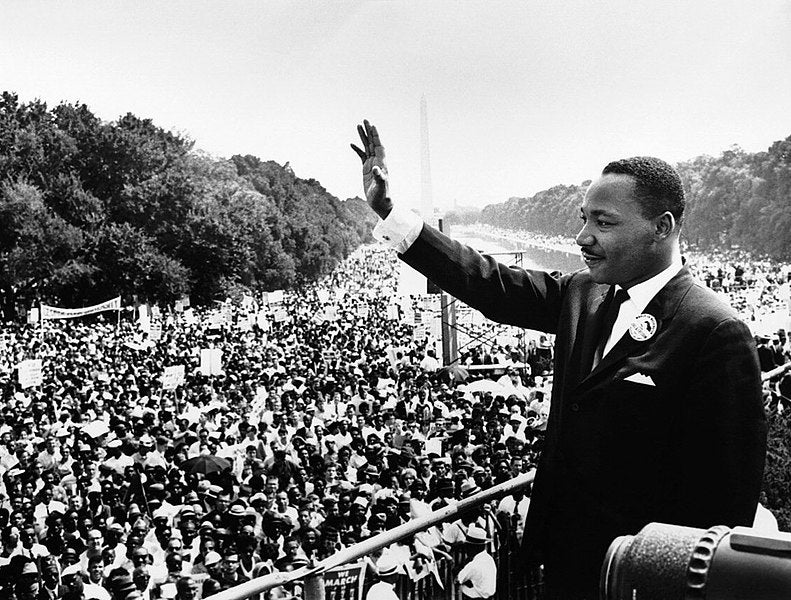Karol V. Mason is the first African-American and first female President of John Jay College of Criminal Justice. As United States Assistant Attorney General, she was a leader in the Obama Administration on juvenile justice issues, bail reform, and re-entry for individuals leaving prison. She will speak as part of the Our Imperfect Union track at the Aspen Ideas Festival.
When a parent looks down at their newborn child, they’re filled with hope. A hope that if this child works hard in life, he’ll be successful. It doesn’t matter where he was born, how much his parents make, or his ethnicity. That hope is there. It’s a hope we pride ourselves on as a nation — we’re the “Land of Opportunity.” But in today’s America — where many black and brown children are often looked at with more suspension and less empathy — we have to start asking ourselves a tough question: Do we give every child the same opportunities?
The Reality
Here’s a simple truth: We all have our biases. And many of us don’t understand our biases until we see the data. Today we have multiple studies and reports, proving that people of color are disproportionately impacted by the criminal justice system. The United States Sentencing Commission issued an update on its report, checking if the racial disparity in sentencing was because one group had more violent crime than another. But, when they normalized the data for that factor, they concluded that sentencing was still unjustifiably disproportionate. Black and brown people are just being treated more harshly. It’s why black parents tell their children, “You can’t afford to make mistakes that other people can, because you won’t get a second chance.” We’ve all made mistakes as kids. It’s part of adolescent development. The problem is that we’ll give some young people the room to make mistakes, but we don’t give black and brown children that same room.
The “Otherness”
What we need to do is see people as people. We need to see the humanity in people that may not look like us, may not sound like us, but in every sense that matters are a part of us. In many cases, without consciously knowing it, we create an “otherness” that demonizes the unfamiliar. When what we should be doing is recognizing our similarities. We have to start seeing black and brown children as our children. I know that for some people it’s disconcerting seeing the demographic of our country changing. But the reality is, in the not so distant future, Caucasians will be the minority. That means that black and brown children are a part of our future, and we should be investing in them.
The Investment
When it comes to social and economic mobility, education is the key. You can’t succeed in this society anymore without an education. A high school education used to be the minimum, now a college degree is the minimum for most jobs. Right now more black and brown children are attending college, but the number of them graduating is not increasing. That’s why student success is my biggest focus as president of John Jay College. We have to change that paradigm and get those numbers up. It’s all about where we focus our attention and our investment. Many of these students come from families where there’s poverty, homelessness, food insecurity and undocumented status. They’re fighting all these odds, and it’s in everyone’s best interest to help give them the resources they need to graduate. You’d be surprised what something as simple as a MetroCard or a regular meal can do for a student. These students need support and education, as well as structure and boundaries. But those boundaries should support their success, instead of making their lives even harder.
The Cycle
I believe that as a society we’ve become less forgiving. And this less forgiving nature impacts black and brown children deeply in two specific areas: the classroom and the criminal justice system. In many cases, if a child doesn’t follow the teacher’s instructions in the classroom, it quickly becomes a behavioral issue with someone being called in to remove the child. But it doesn’t have to always be this way. I know a police officer who changed this dynamic simply by stooping down and whispering to a student, “What’s wrong?” Instead of telling this young, black high school student, “Your teacher told you to lift your head off your desk. Lift up your head.” He had the sensitivity to understand there could be a bigger issue at hand. As it turns out, the child had witnessed a friend being shot and killed the day before. He was still processing that trauma. This police officer broke the cycle. He didn’t make a scene. He just asked the student to come with him to get some help. It’s all about creating a supportive environment instead of a punitive one, because it’s our job to keep children in school, not to push them out. And when young people get tied up in our criminal justice system, we need to acknowledge their humanity and provide the resources for them to succeed afterwards. The research is clear, you keep people from coming back into the system if they have jobs, education and a connection to family. And isn’t that what we want? Successful reentry lessens the cost on the taxpayer, and strengthens families and communities because they become productive members of society.
The Future
At John Jay my ultimate motivation is helping students find the resources they need to thrive. And that’s what our society should be doing, providing systems that help all children, regardless of race, ethnicity, income or status. Even when you look at it from a cost perspective, in the long run, it’s cheaper to educate children, and it’s cheaper to keep them out of the criminal justice system. We have to look at black and brown children as our hope and our future. The next great novelist could be that child that was kicked out of class. The scientist that finds a cure for cancer could be that child that was locked up. Black and brown children deserve the opportunity to succeed. And as a society, we can’t afford not to give it to them.
The views and opinions of the author are her own and do not necessarily reflect those of the Aspen Institute.


